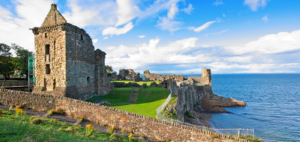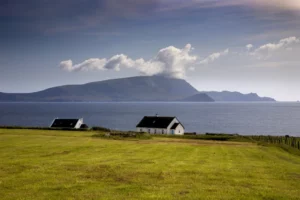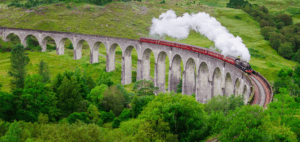How The Spanish Armada Changed History
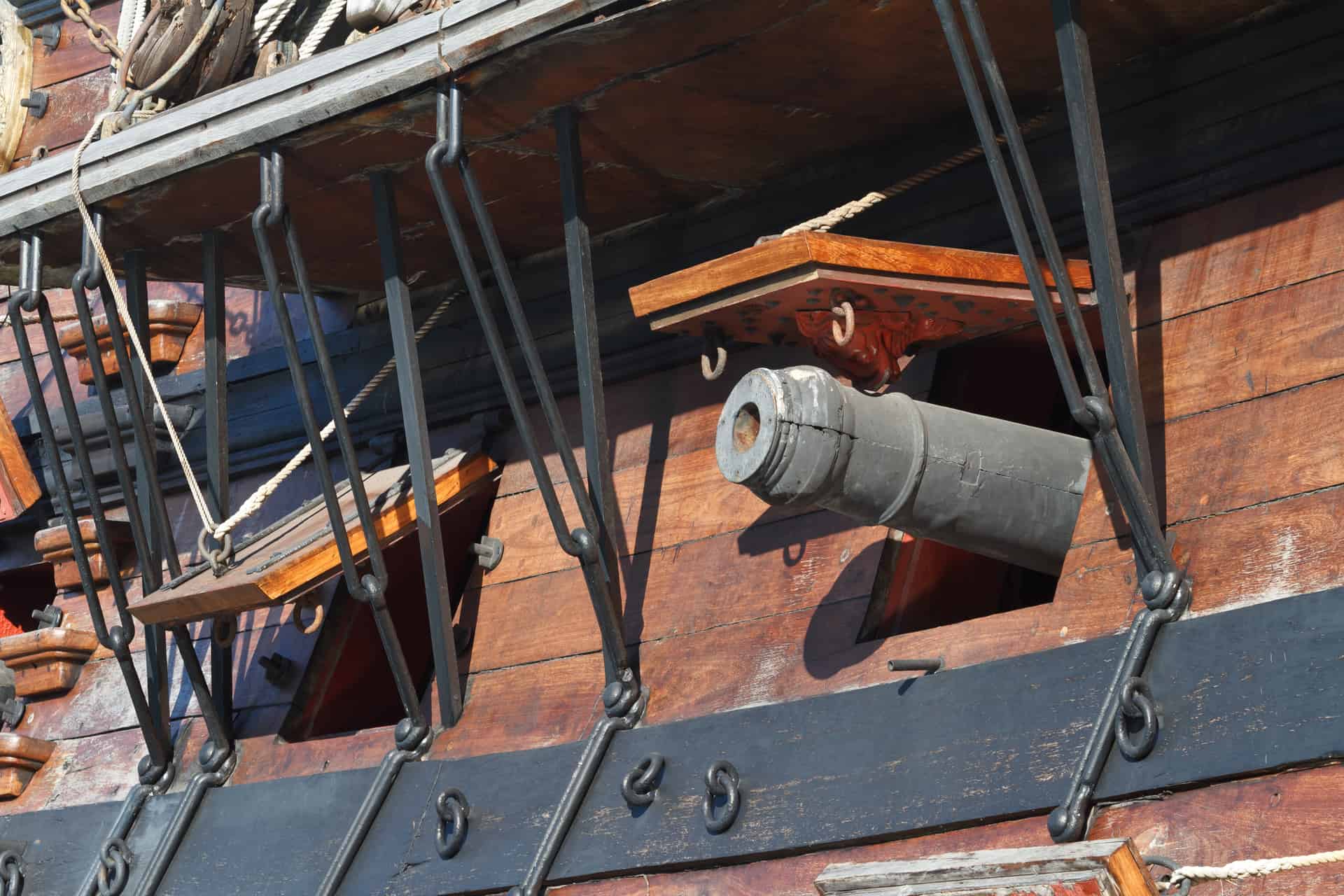
Updated On: April 07, 2024 by ConnollyCove
What is the most crucial date in British history? 1701, when The Act of Union was formalised, and the most successful national union in history was born? Or 1914, the beginning of World War I that destroyed Victorian Britain? Or how about this one ─ 28 July 1588? So, why is it an essential date in British history? Well, it was the Spanish Armada, and here’s a little background.
Table of Contents
Dawn of the Spanish Armada
It was one of the most pivotal battles in the early age of sail. It was a struggle to control the seas between a significant colonial empire and an upstart naval power. It was also a war of religion and royal succession. We’re looking at the Spanish Armada sent to dispose of Queen Elizabeth of England, the one that could’ve changed the whole dynasty’s rule of Europe and the world.
In 1588, the most powerful man in the world was the king of Spain, Phillip II. Flush with gold and silver from the New World; he had no rivals save one: Queen Elizabeth of England. Tensions were high between England and Spain for much of the 16th century.
Religious conflict and dynastic struggles had been exacerbated by English pirates attacking Spanish holdings in the New World. England was Protestant, and Spain was Catholic, as was most of Europe. In addition to considering her a heretic, Phillip hated her for two extra reasons: First, she was financing a rebellion by Dutch Protestants against Spain in the Spanish Netherlands, which Phillip controlled, and second, she executed her rebellious cousin, Mary Queen of Scots. Mary, like Phillip, was a Catholic monarch. Phillip felt Mary, not Elizabeth, was the rightful heir to the English throne. Phillip felt that with the execution of Mary Queen of Scots, Elizabeth had gone too far. Queen Elizabeth’s declaration of support for the Protestant rebels in the Spanish Netherlands was the final straw to break out an undeclared war between the two countries in 1588.
The Spanish Fleet
The time had come, he decided, to discipline her and her heretic nation. He came up with an audacious plan: he would invade England. To do this, he needed a large army and lots of ships. He required an Armada. 130 ships that would carry 30,000 men. Phillip was wealthy but not that rich. To build such a fleet, he would have to borrow heavily. But this wasn’t much of an obstacle because once he conquered England, he could use the English treasury to pay debts. The Pope promised additional financing, wishing to see England return to the Catholic fold. Pope Sixtus V was infatuated with Elizabeth, telling an astonished Venetian ambassador: “Were she a Catholic, she would be our most beloved, for she is of great worth”.
Consequently, King Phillip gained papal consent to invade England, dispose of Elizabeth, and replace her with the Catholic monarch. He quickly set about constructing the massive fleet- the Invincible Armada. Commanded by the Duke of Medina Sidonia, it was to meet up with an invasion force under the command of the Duke of Parma in Flanders. The army then crossed over and landed in south England, quickly seizing London.
The Building of the Great Armada
So, the ships were built, and soldiers were recruited. Most importantly, King Phillip had chosen a competent man to lead them, the Marquis de Santa Cruz. Santa Cruz asked for more time to prepare his ships and men to sail, but King Phillip was impatient. Far too impatient, as it turned out. There was a setback. In April 1587, Sir Francis Drake raided Cadiz, destroying or capturing over 30 Spanish ships. But a year later, the Armada was ready, setting sail on 21 July 1588. With their extensive network of spies all over Europe, the English were well informed of the Spanish King’s intentions and had their navy ready and waiting on their south coast. Their commander-in-chief was High Admiral Lord Howard of Effingham, supported by several famous commanders, including Drake and fellow privateers John Hawkins and Martin Frobisher.
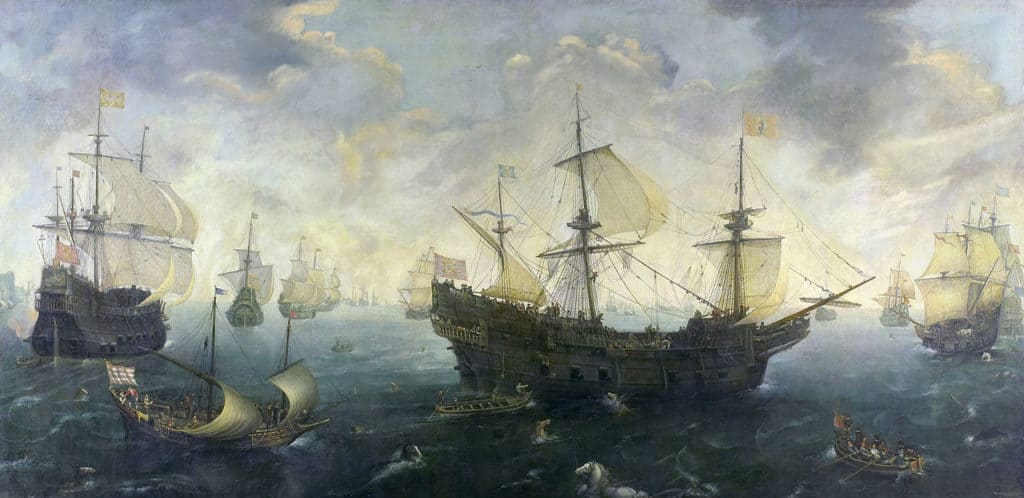
However, In a massive stroke of misfortune (the first of many), Santa Cruz died just before the Armada was set to sail. Rather than take the time to seek a new, suitable replacement, Phillip pushed ahead and appointed Duke Madina Sidonia to take command. There was only one problem: Sidonia was an army general. He had no naval experience; he had never been out to sea.
Grave Mistake
When storms scattered and damaged the Armada after it left Lisbon, Medina Sidonia’s severe doubts about his mission returned. He wrote to Philip: “I am bound to confess that I see very few, or hardly any of those in the Armada with any knowledge or ability to perform the duties entrusted to them.” Not surprisingly, this gloomy letter alarmed and depressed Philip, who spent all day and night in prayer, although suffering from gout in his hand.
You can’t hide that enormous number of ships and men. The English knew that the Spanish were coming and were ready for them. What they lacked in firepower, they made up in manoeuvrability, familiarity with the treacherous English Channel, and the most capable and creative sea commanders of the age ─ Lord High Admiral Howard, Sir John Hawkins and Sir Francis Drake.
Naval Warfare in the Medieval Ages
The nature of naval warfare had changed significantly during the 16th century. Medieval fleets mainly consisted of merchant ships pressed into service temporarily. Only recently did the governments of the day have the resources to fund the construction of specialised warships and maintain permanent navies. The increased use of gunpowder was another major factor that changed the face of naval combat. Medieval ships acted like floating castles; encounters between ships mainly consisted of boarding actions with wooden towers on the bow and stern serving as shooting platforms.
From 1500 onwards, warships like the Mary Rose started to come fitted with gun ports designed to deliver devastating broadsides to the enemy. However, this was a transitional period, and boarding was still a standard tactic. The transitional nature of naval warfare in the 16th century was reflected in the make-up of the fleets. The core of the Catholic fleet consisted of 22 large galleons armed with cannons but primarily designed for transport and oar-powered galleasses. They were supported by over a hundred armed merchant vessels.
British medieval castles played a massive part in defending the royal families. Read about one of them here.
A total of eighteen thousand men were on the ships, combined with the army of Flanders, reaching thirty thousand, a considerable number of men for the time. Conversely, the English had 34 race-built warships developed by John Hawkins, which were smaller and more manoeuvrable than the Spanish ships. These were supported by 163 merchant vessels. The English fleet received word on 29 July that the Spanish had been sighted off the coast of Cornwall. They managed to outmanoeuvre the Armada under the cover of darkness of the night.
The Armada in Action
On 31 July, the first action was fought off Plymouth. From their superior upwind position, the English bombarded the Spanish from afar, denying them the advantage the larger ships would have had at close range. They failed to sink ships, although two Spanish vessels were abandoned after colliding. As the Armada headed east along the south coast of England, another similarly indecisive action was fought off Portland.
The Spanish then tried to enter the Solent, where they could take shelter and wait for the Duke of Parma’s army to give word that it was ready to cross, but the English fleet fended them off, and they decided to head to Calais (a town in France) instead.
Communication has always been a significant problem. Arriving at Calais on 6 August, it quickly became clear that the army at Dunkirk had been severely reduced by disease and still needed preparation. They were forced to anchor, unable to find shelter, and vulnerable to attack.
Halt and Catch Fire
They knew they couldn’t win a shootout with the Spanish. So, on the evening of the 7th, the English fleet arrived, finding the Armada moored in a crescent formation. Instead of a shootout, they launched a pre-emptive attack on the Spanish fleet while it was still docked in the French port of Calais. They set several of their ships on fire and sailed them into the port. The Spanish cut their anchors to flee the flaming English ships, but in their panic, they only made matters worse. The Spanish vessels rammed into each other, tangling riggings, slicing sails and crushing hulls. The ships that weren’t damaged were sitting ducks for the English. By morning, the Spanish were in chaos, and the stage was set for the battle of Gravelines.
The English approached the Spanish ships for the big showdown. They wanted a decisive action this time, but they realised they needed to get within a hundred meters to penetrate their weaponry. They would need a plan to get this close without being sunk first. However, the Spanish had some key tactical weaknesses that they could exploit. In many ways, the Spanish naval doctrine was still stuck in the old medieval mindset, favouring boarding actions where their superior workforce would play to their advantage. Their ships were also stocked to the gills with supplies for the invasions. This meant that many of the gun decks were so crowded that the cannons couldn’t be brought into the position to reload properly after firing. Therefore, the idea was for the gun crew to fire one salvo and then get onto the position for boarding. On the other hand, the English knew what sort of crucial role cannon could play in naval warfare. Hence, they got close enough to provoke a single ineffectual salvo from the Spanish and then quickly closed in an open fire.
The ships’ crews were close enough to exchange musket fire, but the English used their manoeuvrability to avoid getting boarded. They just pounded the Spanish weaponry holes for the next 8 hours until they were forced to withdraw for the lack of ammunition. Five Spanish ships were sunk, ran aground, or captured. Many others were severely damaged, and it was now clear to the Spanish that there would be no invasion. The bulk of the Spanish fleet would likely have been driven aground had the wind not suddenly backed south. They escaped north, pursued and hurried up the east coast of England. Their only choice now was to head back to Spain by passing anti-clockwise around the British Isles.
Defeat Streak
Seeing England had blocked their way back to Spain, the badly wounded Armada sailed north into the Atlantic, hoping to regroup. But then the weather turned. Mother Nature had decided to finish what the English started. These were the days before longitude could be measured accurately. Unbeknownst to the Spanish, the Gulf Stream was carrying the ships northeast, and they ended up steering south far earlier than they intended, passing perilously close to the west coast of Ireland.
When it was over, only 76 of the 130 Spanish ships returned home, and half of the 30,000 soldiers were at the bottom of the Atlantic Ocean.
Spain never rechallenged England. Spain never rechallenged anyone. It was finished as a great power.
Aftermath
The Spanish Armada was seen as a major propaganda victory for Europe’s Protestants and ultimately became part of British national mythology: an early episode in the emergence of England as a naval power and the beginning of the British empire. The contemporary reality was somewhat different. Spain had failed in her objective but had not been decisively defeated and would retain hegemony at sea for several more decades.
In military terms, the Spanish Armada appeared to vindicate English-style naval tactics: using dedicated manoeuvrable warships and engaging the enemy with cannon and rod sides. These methods would be developed into the classic line of battle, forming the core doctrine of naval tactics in the 17th and 18th centuries. Boarding actions were becoming increasingly outdated. However, they were by no means obsolete and still regularly took place well into the 19th century.
What If The Spanish Armada Succeeded
So what if the Spanish Armada was successful? What if the English hadn’t acted the way they did? What if Spain had been ready earlier and still had a great navy leader to sail the fleet?
Here are two scenarios:
Spain would unlikely have conquered England if the Spanish Armada had won the battle. This is because Spain was also in conflict in other wars at the time, as well as being in debt. Phillip’s aim─ as mentioned before- was to restore the Catholic monarchy in England and end the Protestant Tudor establishment. This would stop the English from interfering with the Spanish Netherlands, which supported the Protestant rebels. This meant that the Dutch revolt might have failed, which also meant no independence for the Dutch.
But what if Spain did manage to invade England with success? The English crown would have fallen to the Spanish Empire, which would likely lead to revolts, but let’s say these revolts failed also. It would mean no British exploration, no 13 colonies, the Spanish might continue to expand viceroyalty in New Spain, no British colony in Australia or New Zealand (which would leave the gap for other Europeans to colonise them), no British authority in Canada, and mainly the British Empire would never have existed. Spain might have become the most dominant power in the world.
The Part about the Spanish Armada They Didn’t Tell You About
This failed invasion was not the most significant naval invasion England ever faced. It was not even the largest naval threat to England from Spain. And it was definitely not the largest naval threat to England in the same century. There were two naval threats at that time.
The 1588 invasion is just the first Spanish Armada. It had many ships and galleons, but the truth is, this is the smallest of the three Armadas. Spain, of course, was the most significant naval power at the time, and they had many ships. After more minor fights between England and Spain and a laughably small English counter-Armada into Spain, Spain eventually decided to try again in 1596.
How many ships this time? 140 ships, 24 of which were galleons. However, the weather essentially ruined the fleet before they could get there. This loss was so devastating it was one of the main reasons Spain went bankrupt as a country.
The third Spanish Armada also had 140 ships but 44 galleons. That’s double the number of big ships compared to last time. The result? Another storm. However, unlike the previous time, some ships got past it. Then, the unthinkable happens. The Spanish landed troops in England. Yes, 400 men landed in Cornwall with orders to expect reinforcements soon so they could begin their invasion, but the storm scattered so many ships that they couldn’t get reinforcements in time. So, before acting further, they returned to their ships and left. Now, that’s anticlimactic. The 19-year Anglo-Spanish war ended in 1604 as Elizabeth’s successor, James VI and I wanted to end the cripplingly expensive hostilities. The Treaty of London granted much of what Philip II demanded if England had been forced to sue for peace in 1588.
At the end of this, England ended its support of the Dutch rebellion in the Spanish Netherlands and renounced her pirates’ attacks on Spanish shipping. On Spain’s part, the treaty acknowledged that official hopes of restoring Catholicism to England were over forever.


